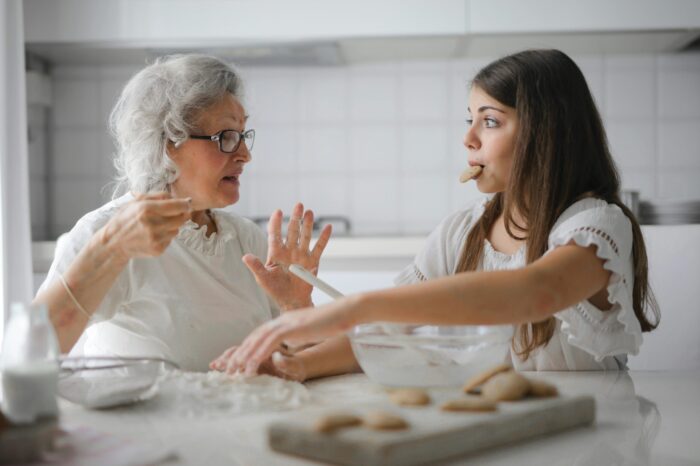What support do people with Parkinson's need?
People with Parkinson’s need a variety of support to manage their condition effectively. This includes medical care for symptom management, regular exercise to maintain mobility, and a balanced diet to address nutritional needs. Emotional support is crucial, as many individuals experience depression or anxiety. Assistance with daily activities like dressing, bathing, and medication management becomes necessary as the disease progresses. Additionally, creating a safe home environment to prevent falls is important. Social engagement through support groups or activities helps combat isolation and provides a sense of community and belonging.

Caring for someone with Parkinson’s disease (PD) is a journey that requires patience, understanding, and adaptability. Parkinson’s disease is a progressive neurodegenerative disorder that affects movement, muscle control, and balance. As the disease advances, individuals may experience a range of physical and cognitive challenges, making caregiving both demanding and rewarding. Here are essential aspects of caring for someone with Parkinson’s disease.
1. Educate Yourself About Parkinson’s Disease
Understanding Parkinson’s disease is the first step in providing effective care. Educate yourself about the symptoms, such as tremors, rigidity, bradykinesia (slowness of movement), and postural instability. Additionally, familiarize yourself with non-motor symptoms like depression, anxiety, cognitive impairment, and sleep disturbances. Being well-informed helps you anticipate challenges and respond appropriately as the disease progresses.
2. Create a Safe and Comfortable Environment
People with Parkinson’s often experience difficulties with balance and coordination, increasing the risk of falls. To create a safer environment:
- Remove hazards: Eliminate clutter, loose rugs, and ensure good lighting to prevent trips and falls.
- Install grab bars: Place grab bars in bathrooms and along stairways.
- Use assistive devices: Consider using mobility aids such as walkers or canes, and adaptive utensils for eating.
- Furniture arrangement: Arrange furniture to allow clear pathways, making it easier for the person to move around.
3. Encourage Regular Exercise
Exercise is crucial for managing Parkinson’s symptoms. Physical activity can improve mobility, balance, flexibility, and overall well-being. Encourage the person to engage in activities like walking, swimming, or specialized exercise programs designed for individuals with Parkinson’s. Stretching exercises and yoga can also be beneficial for maintaining flexibility and reducing muscle stiffness.
4. Support Medication Management
Parkinson’s disease requires a strict medication regimen to manage symptoms effectively. As a caregiver, you may need to help with:
- Medication scheduling: Ensure medications are taken on time, as prescribed. Delayed doses can lead to worsening symptoms.
- Monitoring side effects: Be aware of potential side effects and communicate any concerns to healthcare providers.
- Staying informed: Keep track of any changes in medication or dosage and understand their effects on the person’s condition.
5. Promote a Healthy Diet
Nutrition plays a significant role in managing Parkinson’s disease. Encourage a balanced diet rich in fruits, vegetables, whole grains, and lean proteins. Certain dietary considerations include:
- Fiber intake: Constipation is common in Parkinson’s patients, so a diet high in fiber can help.
- Hydration: Encourage regular fluid intake to prevent dehydration and help with digestion.
- Meal timing: Some medications interact with protein, so timing meals around medication schedules may be necessary.
6. Assist with Daily Activities
As Parkinson’s progresses, daily tasks like dressing, bathing, and eating may become more challenging. Your assistance might be needed with:
- Personal care: Offer help with grooming, dressing, and bathing while respecting their independence as much as possible.
- Adaptive tools: Use tools like button hooks, slip-on shoes, or weighted utensils to make daily tasks easier.
- Patience and support: Provide assistance with patience, giving the person time to complete tasks on their own when possible.
7. Address Cognitive and Emotional Needs
Parkinson’s can affect cognitive function and emotional well-being. As a caregiver:
- Monitor cognitive changes: Be alert to signs of cognitive decline, such as memory loss or confusion, and discuss these with healthcare providers.
- Emotional support: Depression and anxiety are common in Parkinson’s patients. Offer emotional support, encourage social activities, and consider professional counseling if needed.
- Social engagement: Help maintain social connections through activities, visits with friends, or support groups.
8. Plan for the Future
As Parkinson’s disease progresses, long-term planning becomes essential. This includes:
- Legal and financial planning: Ensure legal documents like power of attorney and advance directives are in place.
- Long-term care options: Discuss potential future care needs, including home care services, assisted living, or nursing home care.
- Caregiver support: Seek support for yourself as a caregiver, whether through support groups, counseling, or respite care services.
9. Communicate with Healthcare Providers
Regular communication with healthcare providers is vital. Attend medical appointments, ask questions, and stay informed about new treatments or therapies that might benefit the person you’re caring for. Collaboration with healthcare professionals ensures that the care plan is comprehensive and adaptable to the evolving needs of the individual.
10. Take Care of Yourself
Caring for someone with Parkinson’s can be emotionally and physically taxing. It’s important to prioritize your own well-being. Ensure you have time for self-care, seek support from friends, family, or support groups, and consider respite care when needed. Remember, caring for yourself enables you to provide better care for your loved one.
How to deal with someone who has Parkinson's?
Dealing with someone who has Parkinson’s requires patience, understanding, and empathy. Parkinson’s disease affects movement, so be prepared to assist with tasks like walking, dressing, or eating. Allow extra time for these activities, as rushing can increase frustration. Communication may be slower; speak clearly and give them time to respond. Emotional changes are common, so be supportive and understanding of any mood swings or anxiety.
Encourage independence as much as possible, but be ready to step in when needed. It’s important to create a safe environment by removing tripping hazards and ensuring accessibility.
Educate yourself about the disease to better understand its challenges. Regularly check in on their emotional well-being and offer a listening ear. Be patient, as tasks and conversations may take longer than usual. Above all, treat them with dignity and respect, maintaining a positive, encouraging attitude to help them feel valued and supported. Engage in activities they enjoy, which can boost their mood and help maintain a sense of normalcy.
What are good activities for people with Parkinson's?
Engaging in regular activities is crucial for people with Parkinson’s to maintain physical and mental well-being. Exercise is particularly beneficial; activities like walking, swimming, and cycling help improve mobility, balance, and strength. Tai Chi and yoga are excellent for enhancing flexibility and reducing stress, offering a calming effect while improving posture and coordination. Simple stretching exercises can also be integrated into daily routines to keep muscles limber.
Creative activities, such as painting, drawing, or playing a musical instrument, can stimulate the brain and provide a sense of accomplishment. These activities are not only enjoyable but also help in maintaining fine motor skills and cognitive function.
Social interaction is vital, so encourage participation in group activities or classes, which provide both physical benefits and social engagement. Dancing, especially styles like ballroom or line dancing, is a fun way to combine movement with rhythm, improving coordination and balance.
Puzzles, reading, or engaging in hobbies like gardening or cooking can keep the mind active and focused. These activities also offer a sense of purpose and can be adapted as needed to accommodate any physical limitations.
What is the best living situation for someone with Parkinson's disease?
The best living situation for someone with Parkinson’s disease should prioritize safety, comfort, and accessibility while promoting independence as much as possible. As Parkinson’s progresses, individuals may experience difficulty with mobility, balance, and daily tasks, so a living environment that accommodates these challenges is essential.
A one-level home or apartment with an open floor plan is ideal, as it minimizes the risk of falls and makes it easier to move around. If stairs are unavoidable, installing handrails and stair lifts can provide added security. In the bathroom, grab bars, non-slip mats, and a walk-in shower or tub can help prevent accidents. Lever-style handles on doors and faucets are easier to use than traditional knobs.
The home should be free of clutter, with wide, clear pathways to accommodate walkers or wheelchairs. Good lighting is crucial, especially in hallways and stairwells, to reduce the risk of tripping. In the kitchen, organizing frequently used items within easy reach can make meal preparation more manageable.
Depending on the stage of the disease, having a caregiver or family member nearby can provide essential support. Some individuals may benefit from living in an assisted living facility or a specialized care community where trained staff can provide assistance with daily activities and medical needs.
Related Articles

How Seniors Can Save on Healthcare Costs
How to Plan for Medical Expenses in Retirement Planning for medical expenses in retirement involves several key steps. First, estimate potential healthcare costs, including

What is the Average Cost of Senior Living in Michigan?
Will Medicare pay for assisted living in Michigan? Choosing the right senior living option involves careful consideration of personal needs, financial resources

Introduction to Nursing Homes
Assisted living offers daily support and independence; nursing homes provide 24/7 medical care;

Symptoms & Signs of Depression in Seniors
What is the most common predictor of depression in older adults? The most common predictor of depression in older adults is chronic illness.





